When it comes to ceiling design, it’s something that goes over a lot of people’s heads. Jokes aside, your ceiling can be more than a functional feature of your home, it can make an aesthetic statement or even be the star of the room. Few ceiling designs are as bold as a coffered ceiling which, when done well, can be a breathtaking addition to your home. So let’s raise the roof on coffered ceiling ideas & tips and see whether or not this is the feature for you.
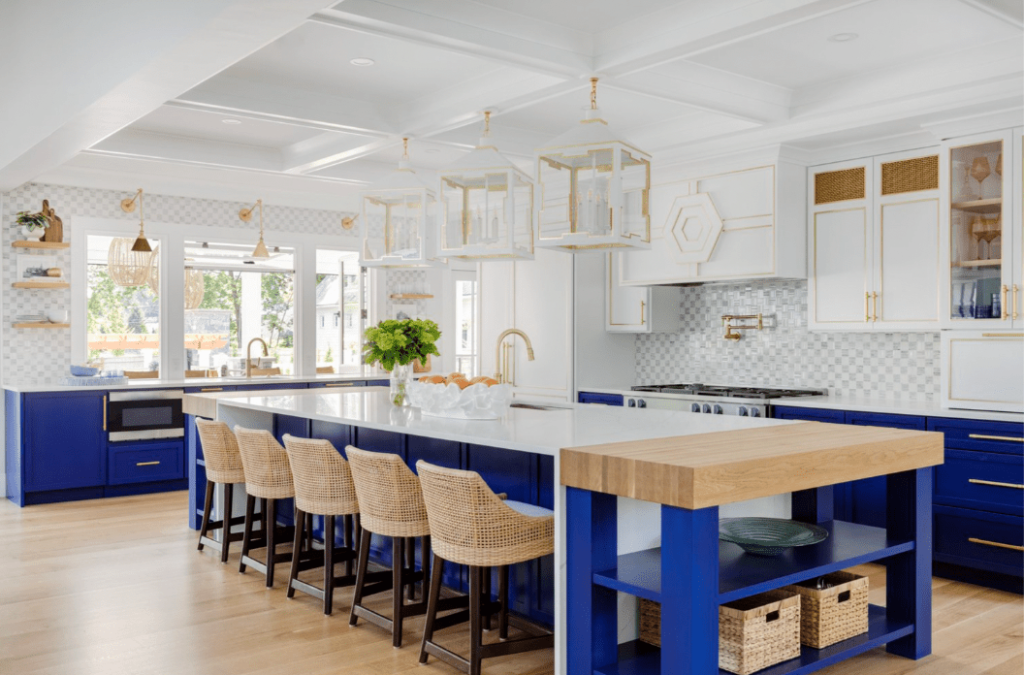
What is a coffered ceiling?
A coffered ceiling is an overhead architectural design that consists of square, rectangular or octagonal grids that are three-dimensional and are sunken or recessed panels. The degree to which the panels are recessed can vary greatly depending on the home. Though often found in older and traditional style homes, it has since been adapted in modern home designs. It’s a very distinct style that can add character and a luxurious feel to your home.
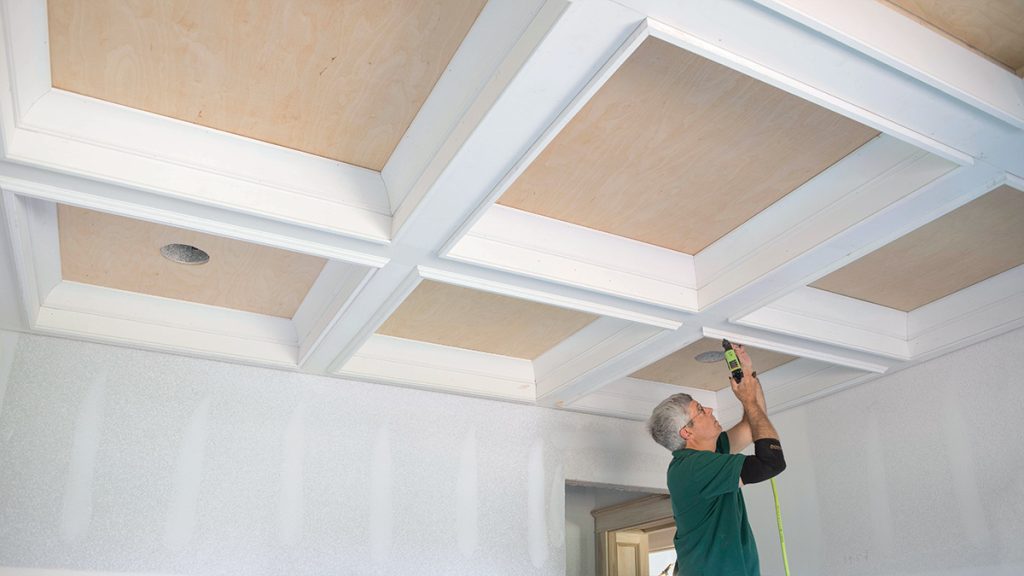
Definition and Characteristics of Coffered Ceilings
Coffering is a very old technique dating all the way back to ancient Greece. You can even find some century-old examples of coffered ceilings in places like Rome and Athens. Originally created as a way to help reduce the weight of stone ceilings, it was later adapted for wood beams and became a staple of the Renaissance Era. These historical associations no doubt attributed to coffered ceiling design having a grand and luxurious reputation. Though its popularity may peak and dip, it does have a timeless quality that means it never completely goes out of fashion.

Why Choose a Coffered Ceiling
Visual Interest and Architectural Detail: A Coffered ceiling with a clean look and no decorative moulding can offer a striking yet restrained look to your home design.
Adding Dimension to Ceiling Space: Ceiling detail is often something put aside by homeowners, meaning a lot of ceilings are purely functional and quite plain. A coffered ceiling provides a distinct, definitive look to your ceiling and can even become the focal point.
Creating a Sense of Luxury: Coffered ceiling design has a timeless quality and it suits larger homes, smaller houses and anywhere with a little more overhead space.
Increase in Property Value: The design is very striking and can increase property value, fetching a higher price from the right buyer.
Coffered Ceiling Design examples
Classic Grid Patterns
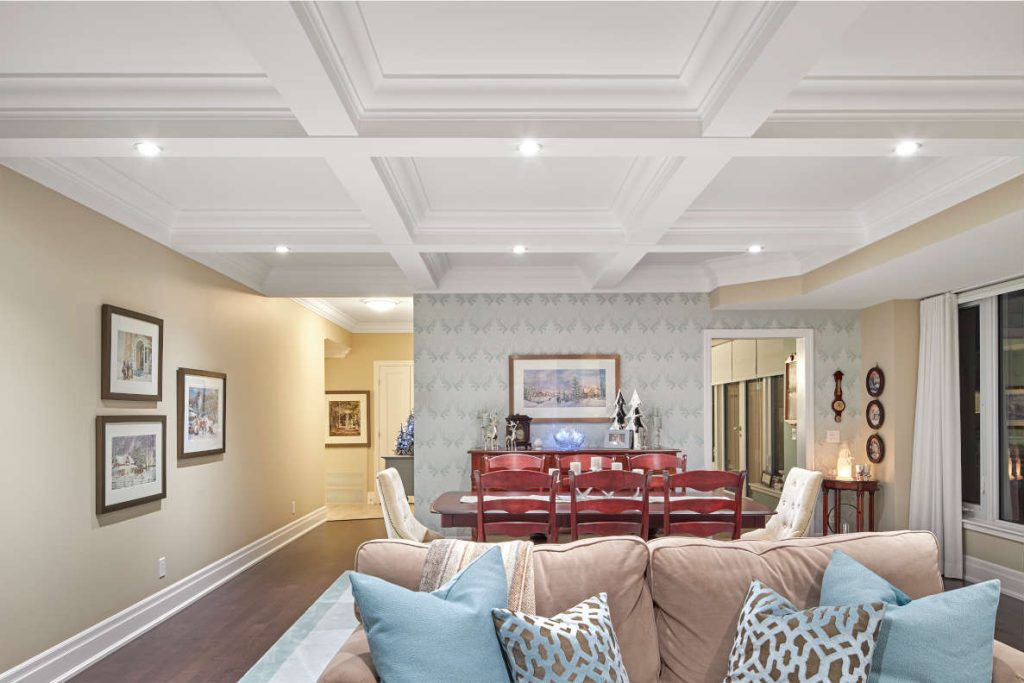
Geometric coffered ceilings and Modern Patterns

Recessed Panel Coffered Ceilings

Diamond Coffered Ceiling

What Materials are used for Coffered Ceilings
Wood Coffered Ceilings
Wood or timber offers a warm, natural aesthetic and is often the material of choice for a classic coffered ceiling. There are a variety of wood types and finishes to provide a range of options, so you can find the perfect solution for your existing design.
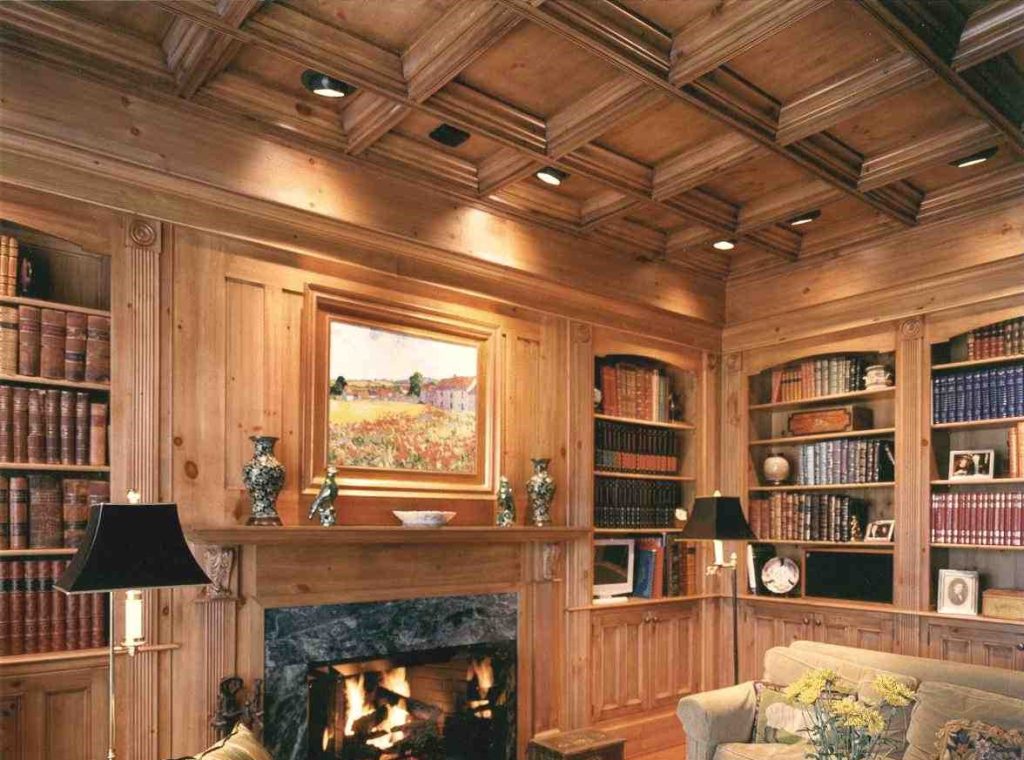
MDF (Medium Density Fiberboard)
If wood is out of your price range but you’d still like to have a coffered ceiling, Medium Density Fibreboard offers an affordable option. Though it doesn’t offer the same durability as timber, it still can serve you well.

Coffered Ceiling Lighting Options
There are a range lighting options that will work with Coffered ceilings including:
Recessed Lighting

Chandeliers and Pendant Lights

Beyond providing light, your choice of fixture could focus on performing any of the following:
- Provide Subtle Illumination for Ambiance
- Highlighting Architectural Features
- Focal Points in Coffered Patterns
- Enhancing the Overall Design
- Providing targeted light for specific tasks
Key Considerations and Tips When Creating the perfect coffered ceiling design for your home build interior
Practical Considerations for your coffered ceiling
Ceiling height and room size: Ideally, your ceiling design won’t make the room feel small or restrained. Coffered ceilings are supposed to make the room feel more spacious, not less.
Adapting designs to space constraints: Any design choice needs to work within the constraints of the room you’re working in.
Aesthetic Cohesiveness: Every room is made of the sum of its parts. Your ceiling design has to work with the rest of your architectural details and interior design.
Climate Consideration: Where you’re building, and the climate of the area, are essential considerations for any build.
Insulation: The better quality of your insulation, the more often your home will be at a comfortable temperature. This cuts down on energy costs and improves overall liveability. Insulation will also absorb sound, both from coming in and going out.

Creative considerations for your ceiling design
Collaborate with Architects and Interior Designers: A DIY coffered ceiling will be beyond most people, so you’ll end up with a much better result by hiring professionals.
Tailoring Designs to Personal Preferences: Coffered ceiling ideas cover quite a range of different looks, so find something that both suits your overall home design and your personal taste.
Balancing Style with Functionality: We all want our homes to have style, but it shouldn’t come at the cost of functionality. Be sure your new ceiling doesn’t impede any practical features of your home.

How much will a coffered ceiling cost?
There are some key factors to take on board when calculating the cost of your new ceiling, including:
- Size of the job
- Who you hire
- Material Costs
- Labour and Installation Expenses
For rough estimates, expect to pay around $300-$400 per square metre.

Maintenance and Long-Term Considerations of a coffered ceiling design
Cleaning and Upkeep
Unusual patterns can be often harder to clean or maintain than simple designs. However, allowing dirt and cobwebs to thrive will take away from the luxurious look you were originally going for.

Maintaining the Finish and Integrity
The integrity of your finish can be compromised by dirt and dust build-up. Regularly cleaning your ceiling, even with a quick dusting, will go a long way to removing grit, dirt and other contaminants.

Addressing Potential Issues Over Time
Anything made from wood runs the risk of moisture damage and mould. Addressing leaks and signs of mould ASAP will minimise overall damage in the long run.
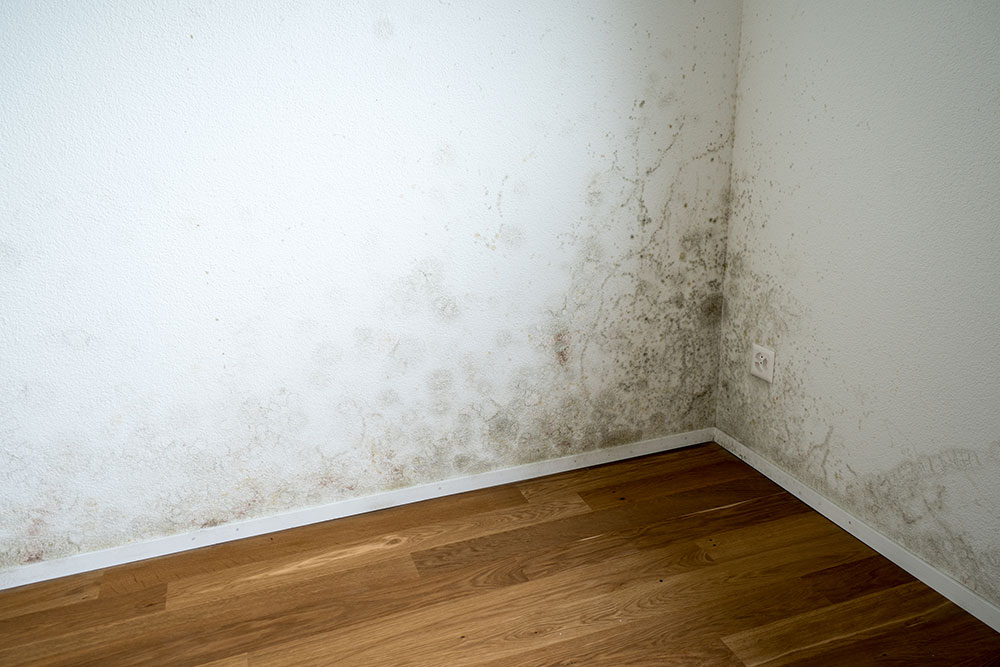
Coffered Ceiling Design Frequently Asked Questions
What is the purpose of a coffered ceiling?
Though originally created to reduce the weight of stone ceilings, nowadays, the main purpose of a coffered ceiling is stylistic. It can be a great way to liven up a living room or give a luxurious, distinct look to your home.
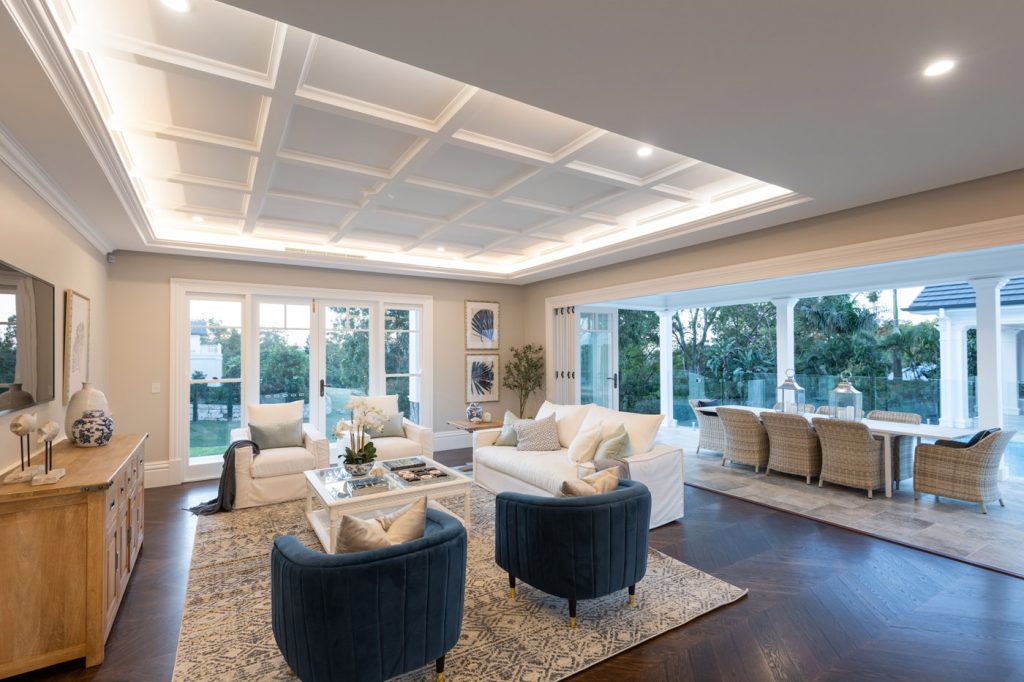
Are coffered ceilings still in style?
Though once seen as a more historic or traditional addition to a home, coffered ceilings have had a makeover and aren’t necessarily out of place in a modern home. Like any design choice, it’s about how you do it and how it fits in with everything else.

Is a coffered ceiling expensive?
Coffered ceilings tend to be more labour intensive than other roof designs and therefore will usually cost more than a regular roof. Costs can vary a lot depending on factors such as:
- The material you use (drywall is much cheaper than hardwood or PVC)
- Who you hire
- Travel and transportation costs.
- The complexity of the design
- Size of your ceiling
- Any complications in the construction process.
Our recommendation is to find a contractor in your area who advertises they offer coffered ceiling designs and discuss what you’re after and get a quote. If possible, repeat this until you have at least three separate quotes from different companies.

Do coffered ceilings add value?
Like a lot of things, the answer isn’t what you do so much as how you do it. A well-designed and installed coffered ceiling can add character and a sense of grandeur to a home, making your home feel larger and more luxurious.

What rooms should have coffered ceiling?
A coffered ceiling is best suited to main rooms such as a living room, bedroom, or entryway. It’s less common in places such as the bathroom, kitchen ceiling and smaller rooms.



0 Comments